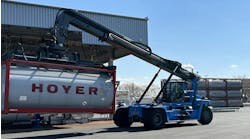The Department of Homeland Security (DHS) has issued a Supplemental Final Rule that provides additional background and analysis for the department's Social Security number No-Match Rule, according to DHS information.
The Social Security Administration informs thousands of employers every year via no-match letters that certain employees' names and corresponding Social Security numbers provided on the employers' Form W-2 wage reports do not match the administration's records. As many as four percent of approximately 250 million wage reports the administration receives each year belong to employees whose names and corresponding Social Security numbers do not match the records, DHS said.
The DHS regulation, which was originally proposed in June 2006 and issued in August 2007 as a final rule, clarifies what steps responsible employers can take to resolve discrepancies identified in No-Match letters issued by the Social Security Administration (SSA). It also provides guidance to help businesses comply with legal requirements intended to reduce the illegal employment of unauthorized workers.
Implementation of the No-Match Rule has been stayed following a preliminary injunction issued by the US District Court for the Northern District of California last year.
In March 2008, DHS published a supplemental proposed rule addressing the issues raised by the court in its order enjoining implementation of the rule, including a more detailed analysis of how the department developed the no-match policy and a detailed economic analysis of the rule. In the coming days, DHS will return to the district court to request that the injunction be lifted so that implementation of the rule can proceed, according to the information.
The No-Match Rule details steps employers may take when they receive a letter and guarantees that Immigration and Customs Enforcement will consider employers who follow those steps to have acted reasonably. If an employer follows the safe harbor procedures in good faith, Immigration and Customs will not use the employer's receipt of a No-Match letter as evidence to find that the employer violated the employment provisions of the Immigration and Nationality Act by knowingly employing unauthorized workers.








